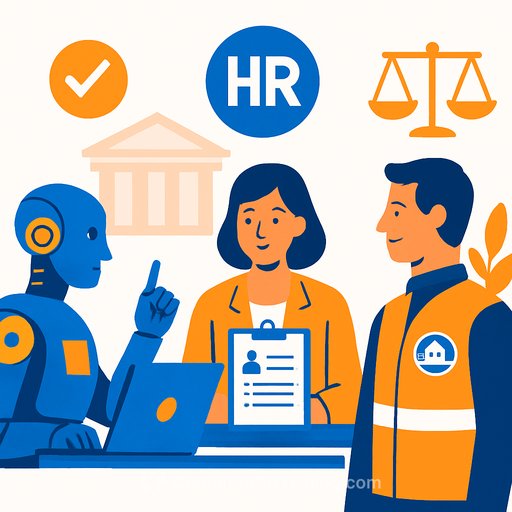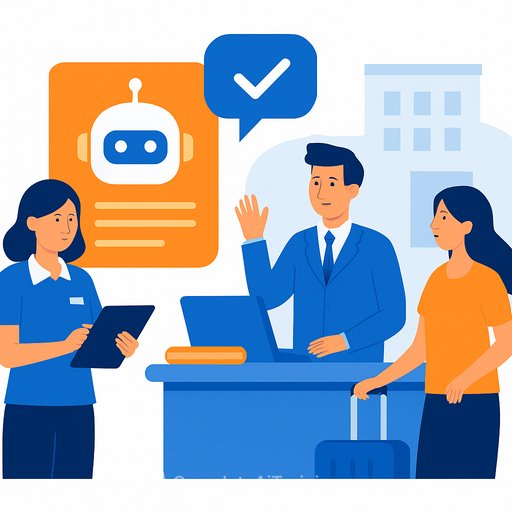Exploring AI in HR for Local Government
The question is not if AI will affect council HR, but how to make it work for your workforce and community. Across Australia, employers are using AI across the employee lifecycle: attracting talent, streamlining recruitment, identifying learning needs, matching skills to roles, and planning future workforce capacity.
Some councils are testing tools now. Others are watching closely. Either way, this is an opportunity to reduce friction in HR processes and create more time for high-value, human work.
AI already in play
AI use in HR is no longer niche. A 2024 survey found 62% of Australian organisations are using AI in HR moderately or extensively. The most common cases include resume screening (73%), AI-based candidate matching (71%), and automated interview scheduling. And 86% of HR leaders say AI and data analytics are improving talent attraction and retention.
These figures reflect broader industry trends, but they point to practical wins councils can adopt with care.
Practical tools across the employee lifecycle
- Automated resume screening
- Candidate chatbots for FAQs and status updates
- Video interviewing and structured scoring
- Onboarding automation and digital forms
- HR support chatbots for policy and leave queries
- Interview preparation aids and question libraries
- Predictive analytics for attrition and workforce planning
- Internal mobility and skills matching tools
Not every tool fits every council. Knowing the options helps you target your biggest bottlenecks first.
Where AI can help HR teams
- Cut manual administration in recruitment and onboarding
- Respond faster to candidate and employee enquiries
- Spot patterns in hiring pipelines and workforce risks
- Free up HR for engagement, wellbeing, and strategic work
The goal is to streamline repetitive tasks, not to replace people. Human judgment stays in the loop.
Risks and guardrails you cannot ignore
- Fairness and bias: models can reflect biased data unless you test and monitor for it
- Transparency: decisions must be explainable and auditable
- Data privacy: HR data is sensitive and must meet legal and policy requirements
- Employee confidence: communicate early, keep humans in charge, and set clear boundaries
- Governance: align with legislation, procurement standards, and community expectations
For privacy obligations, refer to the Australian Privacy Principles from the Office of the Australian Information Commissioner here. For ethical guidance, see Australia's AI Ethics Principles here.
A simple way to start
- Pick one pain point with measurable volume, like interview scheduling or candidate FAQs
- Run a small pilot with a limited user group and clear success criteria
- Keep a human decision-maker accountable for outcomes
- Collect feedback from candidates, hiring managers, and HR staff
- Review impacts on time-to-hire, candidate satisfaction, and quality of hire
What to automate vs. what stays human
- Automate: scheduling, document collection, policy FAQs, initial screening against must-have criteria
- Keep human: final shortlist decisions, interviews, reference checks, offers, and any discretionary calls
Procurement and due diligence checklist
- Explainability: can you see and justify how recommendations are made
- Bias testing: evidence of fairness testing across demographics; ongoing monitoring options
- Privacy and security: data residency, encryption, retention, and access controls
- Compliance: meets council policies, records management, and legislative requirements
- Auditability: logs, version control for models, and clear escalation paths
- Interoperability: integrates with your ATS, HRIS, and identity management
- Change management: vendor training, support, and documentation for end users
Governance that builds trust
- Publish a plain-language summary of how AI is used in HR and why
- Offer candidates an alternative non-AI pathway if needed
- Set up a cross-functional review group across HR, Legal, IT, and Privacy
- Run regular bias, accuracy, and privacy audits; act on findings
- Track and report outcomes to leadership and, where appropriate, the community
Metrics that matter
- Time-to-hire, cost-per-hire, and hiring manager satisfaction
- Candidate experience scores and drop-off rates by stage
- Diversity of applicant pools, shortlists, and hires
- Accuracy and error rates in screening and scheduling
- Employee queries resolved and average response time
Build capability in your team
Give HR staff the skills to evaluate tools, write effective prompts, and interpret AI outputs responsibly. Curated training by job function can speed this up. See AI courses by job for practical options.
Move forward with integrity
AI in HR is progressing fast, but public sector values stay constant: fairness, transparency, and accountability. Start small, measure what matters, and keep people at the center.
With a thoughtful approach and clear guardrails, councils can reduce admin load, improve candidate and employee experiences, and plan their workforce with more confidence.
Your membership also unlocks:






